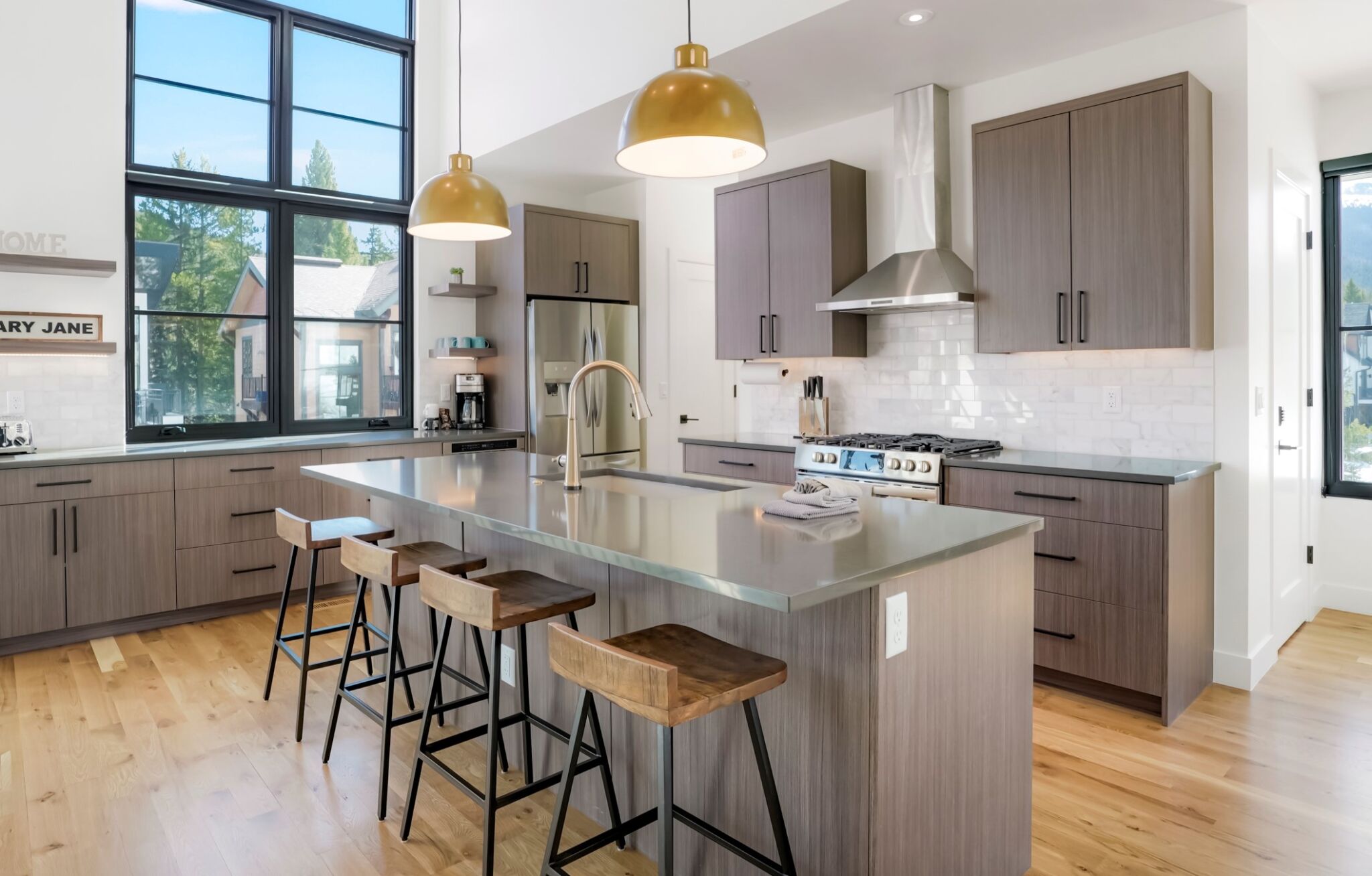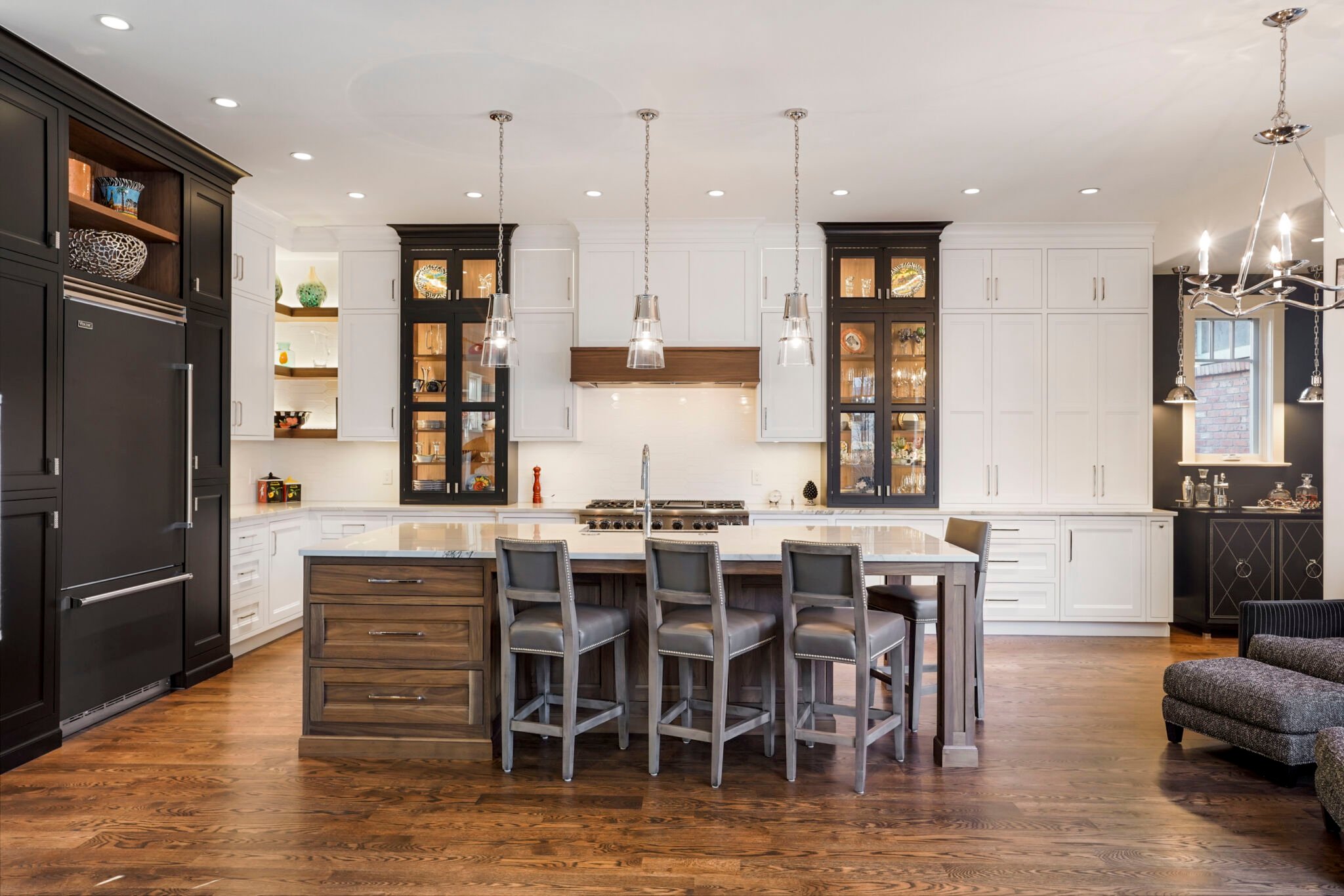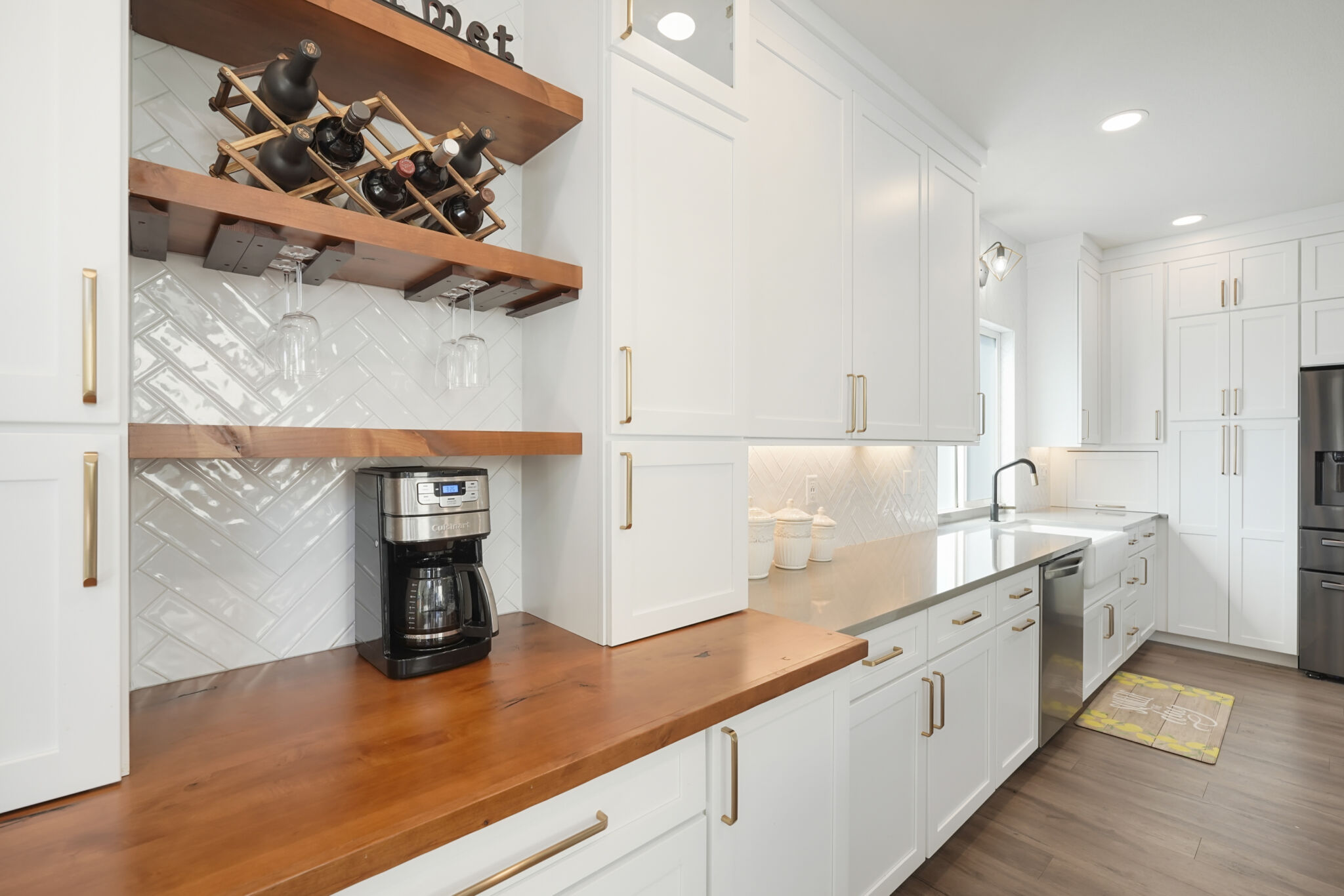11 Nov Planning a Sustainable Kitchen with Eco-Friendly Materials
Do your personal goals include leading a greener lifestyle? If so, you’re in good company; sustainability is a hot topic in 2024 and beyond. From daily transit to dietary choices and even fashion, this value plays an increasingly central role in our daily decision-making. This includes interior design and home renovation. Houzz highlights sustainable kitchen design as one of the top home trends for 2024.
Every room in your home can benefit from sustainable upgrades, but the kitchen is an especially exciting area of opportunity. Unfortunately, sustainable kitchen design can also feel overwhelming, as there are so many hidden sources of waste.
To cut through the confusion, we’ve compiled a guide that breaks down all things eco-friendly. You’ll learn what, exactly, constitutes a green kitchen and how sustainable kitchen remodels can make a difference.

Photo Credit | BKC Kitchen and Bath
What is a sustainable kitchen?
There is no one threshold that determines whether a kitchen can be accurately described as sustainable. Intention matters, however, and any kitchen can be deemed eco-friendly if homeowners make an active effort to reduce environmental damage. Issues worth considering include:
- Deforestation
- Air pollution
- Greenhouse gas
- Water usage
Kitchen sustainability isn’t about quick fixes; it’s a thoughtful and highly holistic approach that centers around responsible stewardship of our precious natural materials. This begins with planning and designing a space that reduces consumption both immediately and far into the future.
Components of a sustainable kitchen
Every kitchen component can contribute to sustainability (or lack thereof). This encompasses not only the design, but also, how you behave on a daily basis.
For example: regardless of cabinet or flooring materials, you can lead a more eco-friendly lifestyle by using less plastic packaging or composting your scraps. Simply cooking at home instead of relying on fast food can make a huge difference.
Still, some kitchen elements have a disproportionate impact on the environment. Large features such as cabinets and counters require greater material extraction, not to mention energy-intensive shipping practices. Meanwhile, appliances can be hugely wasteful on a daily basis. Many refrigerators, for example, still emit “superpollutants” known as hydrofluorocarbons.
To shed light on the many elements that work together to create a sustainable kitchen, we’ve described key components below, along with options for reducing their environmental damage.
Eco-friendly kitchen cabinets
With cabinetry, sustainability involves a combination of eco-friendly materials and quality craftsmanship. As always, style and functionality remain priorities.
Bamboo is a favorite solution, and for good reason: it’s renewable and often affordable. Typically harder than maple or oak, bamboo can also be quite durable. It works well in high-moisture environments, where other materials may be prone to warping. Reclaimed wood is a great alternative for a unique aesthetic – and for keeping materials out of landfills.
While bamboo and reclaimed wood are worth considering, you don’t necessarily need to abandon traditional hardwood altogether. Remember: longevity plays a huge role in determining sustainability. With the right materials and proper installation methods, you can reduce your energy and material consumption over time.
Shoddy cabinets must be replaced frequently. The result? An ongoing energy-intensive process that calls for more materials, production, and shipping. Instead, seek exceptional quality from the outset. Ideally, your cabinets will stand the test of time, forming the basis of a kitchen you’ll adore not just immediately after the renovation, but also, in years or even decades to come.

Photo Credit | BKC Kitchen and Bath
Eco-friendly flooring
Flooring is another major component that has the potential to either up your eco-friendly factor or make your kitchen incredibly wasteful. Again, this is where bamboo shines. Bamboo floors are attractive, cost-effective, and resilient in heavy-moisture environments. This can be fixed to the subfloor or even floated if desired.
Increasingly, many homeowners enjoy experimenting with cork. Like bamboo, it’s a renewable resource. Resistant to the abrasions that so commonly strike high-traffic areas, cork provides a wide array of aesthetic opportunities. Cork is also highly fire and mold-resistant.
For a more classic approach to kitchen flooring, try linoleum. It’s constructed from a surprisingly eco-friendly blend of linseed oil and ground limestone. It’s notoriously durable, and therefore, ideal if you anticipate heavy traffic in your kitchen.
Eco-friendly countertops
Determining sustainability can be tough with counters, as many factors come into play. With popular options such as granite and quartz, a lot depends on where the slabs originate and how they’re sealed. To maximize the green factor, opt for natural stone from nearby quarries, plus non-toxic sealer. Cared for properly, these counters should last years — so you don’t need to worry about the ecological cost of frequent upgrades.
Other options may prove even more sustainable both in the short-term and over time. Soapstone, for example, is a wonderful option because its non-porous status allows you to avoid harsh stains or cleaners.
Bamboo is once again a possibility, but beware: this is generally less ideal for counters than for cabinets or flooring. It’s not nearly as heat-resistant as natural stone – and the extensive maintenance requirements can feel exhausting.
For a unique look, go all-out with recycled glass counters. This distinctive option will make an instant statement, so it’s the perfect fit for a bold kitchen aesthetic. This approach is also highly practical, as recycled glass is heat, stain, and bacteria-resistant.

Photo Credit | BKC Kitchen and Bath
Accents and appliances
How you style your kitchen can play a huge role in determining its ecological impact. The right counters, flooring, and cabinets will form the basis of a sustainable and aesthetically pleasing space, but a variety of other decorative elements also come into play — as do the appliances that help you prepare your favorite dishes and clean up the mess.
These suggestions will help you make your kitchen as functional and sustainable as possible:
- Backsplash. Make a visual statement while protecting your walls from water, grease, and assorted debris. The environmental impact of backsplash is limited as compared to the large elements outlined above, but it’s still important to think sustainably as you update this key kitchen component. Many of the materials we mentioned previously are as valuable for backsplash as they are for counters or flooring. Favorites for an eco-friendly kitchen include soapstone and recycled glass.
- Large appliances. From refrigerators to dishwashers, and of course, ovens, major appliances are heavy contributors to your kitchen’s overarching carbon footprint. While it’s no secret that Energy Star appliances are preferable from a daily consumption standpoint, the materials must also be considered. Stainless steel is the most durable, but you can also boost sustainability by investing in a bioplastic fridge.
- Small appliances. Coffee makers, air fryers, crock pots…all those odds and ends add up. Investing in a new kitchen gadget can be exciting, but before you take the leap, consider: how much do you actually need that item? Each additional appliance means more consumption: extra materials, greater shipping requirements, and increased electricity usage.
The sustainable kitchen of your dreams starts here
Your dream kitchen should live up to all your ideals. With a little insight and some strategic planning, you can create an inviting space that keeps your carbon footprint to a minimum. Emphasize green design and a few other priorities – and you can reverse-engineer a kitchen design you adore. A professional designer can keep you on track.
To get started, download our helpful guide outlining the 6 Steps to a Successful Kitchen Remodel. We’d love to chat about your plans for developing a functional and eco-friendly kitchen, so don’t hesitate to contact us.



